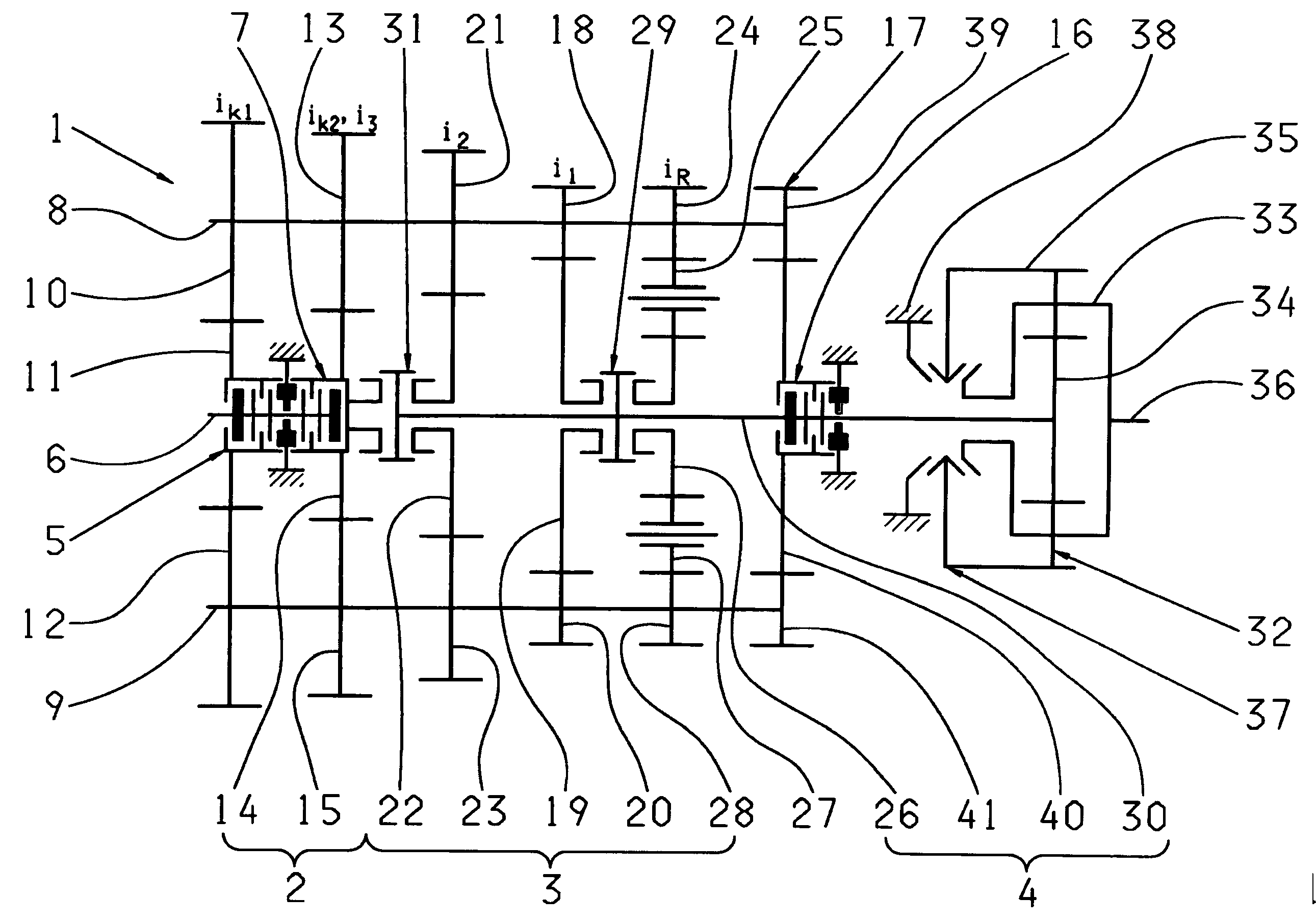Multi-group transmission of a motor vehicle
a multi-group transmission and motor vehicle technology, applied in mechanical actuated clutches, gearing, mechanical apparatus, etc., can solve the problems of unsatisfactory speed increase, fuel consumption increase, speed decrease, etc., to improve shifting comfort, save space and weight, and reduce fluctuations and jerky shifts.
- Summary
- Abstract
- Description
- Claims
- Application Information
AI Technical Summary
Benefits of technology
Problems solved by technology
Method used
Image
Examples
Embodiment Construction
[0031]FIG. 1 shows an automated multi-group transmission designed as a dual-countershaft transmission 1, with two parallel rotating countershafts 8, 9 and three transmission groups 2, 3 and 4 arranged one after another, as can be provided for example in the drivetrain of a truck. Such a transmission, as such, i.e. without traction force support, is known in particular from the ZF-AS Tronic series, and with traction-force-supporting direct gear engagement from DE 10 2006 024 370 A1 by the present applicant, mentioned earlier.
[0032]The first transmission group 2, located on the motor side, is formed as a two-gear splitter group. The second, central transmission group 3 consists of a three-gear main or basic transmission. The third, output-side transmission group 4 is a two-gear range group arranged on the downstream side.
[0033]The splitter group 2 has two gear constants ik1, ik2, each comprising a fixed wheel 10, 12 or 13, 15 respectively arranged rotationally fixed on the first count...
PUM
 Login to View More
Login to View More Abstract
Description
Claims
Application Information
 Login to View More
Login to View More - R&D
- Intellectual Property
- Life Sciences
- Materials
- Tech Scout
- Unparalleled Data Quality
- Higher Quality Content
- 60% Fewer Hallucinations
Browse by: Latest US Patents, China's latest patents, Technical Efficacy Thesaurus, Application Domain, Technology Topic, Popular Technical Reports.
© 2025 PatSnap. All rights reserved.Legal|Privacy policy|Modern Slavery Act Transparency Statement|Sitemap|About US| Contact US: help@patsnap.com



